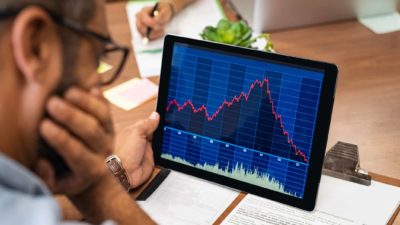As recently as 13 March, Afterpay Ltd (ASX: APT) made an ASX announcement stating that due to the "short duration of our receivables book we are able to manage losses in real time by identifying them early and modifying risk parameters in the system immediately."
The buy now, pay later service provider concluded that "we are well prepared to respond to any changes in customer repayment behaviour, however we have not seen any changes relative to past performance."
What shape a 'modified risk parameter' takes is yet to be seen, but the picture will surely gain focus over the coming weeks.
What lies ahead for Afterpay
An important question is whether Afterpay's purported preparedness for any changes can encompass preparedness for an unprecedented pandemic. Relatedly, Afterpay's past customer repayment behaviour was certainly not influenced by the level of momentous financial changes that has been brought by the coronavirus pandemic.
Interestingly, in its H1 FY20 results announcement, Afterpay stated that in the mid-term, 'short term profitability at the Group level will be impacted by increased investment in accelerating growth in new and developing markets.'
This profitability may be impacted further by the global economic downturn if these investments go ahead. Afterpay did make a loss after tax (statutory) of $31.6 million in H1FY20, up 42% from H1FY19, even without the unanticipated global shock ushered in by the coronavirus. Alternatively, Afterpay may put its expansion and developing markets plans on hold, halting growth that way.
Further, Afterpay reported that the US contribution in H1 FY20 represented more than 30% of its underlying sales. With some of America's major cities in lockdown, this significant contribution to sales may be depressed come next reporting period.
Afterpay also reported that they averaged 16,800 new customers per day in H1 FY20, with a jump to over 22,900 new customers per day in November and December 2019. It will be highly pertinent to see what these averages are for the months of February, March and April 2020.
With crisis comes opportunity
Another thesis is that more consumers will use the instalment payment method to access needed materials (for instance, from Big W – one of Afterpay's merchants) that they cannot afford upfront or cannot access in person.
As the Harvard Business Review reported, global crises like pandemics 'can spur the adoption of new technologies and business models … The SARS outbreak of 2003 is often credited with the adoption of online shopping among Chinese consumers, accelerating Alibaba's rise.'
This potentially bodes well for Afterpay. First, the majority of Afterpay's underlying sales are online, with the H1FY20 channel mix being 76% online and 24% in-store (in its Australian and New Zealand markets).
Second, Afterpay has recently partnered with eBay, writing that their new online retail partner has '11 million unique Australian visitors a month.'
If Afterpay modifies its risk parameters astutely, the economic shock may have some silver linings for the company.








